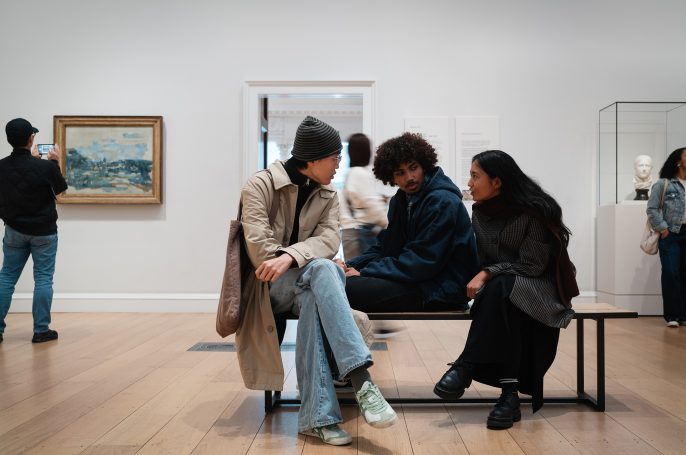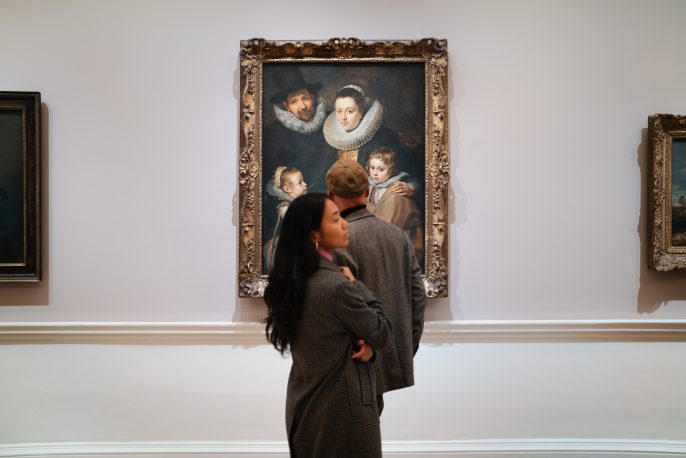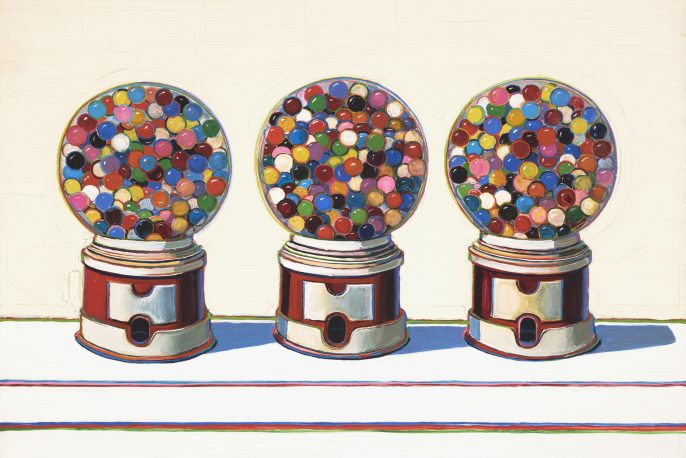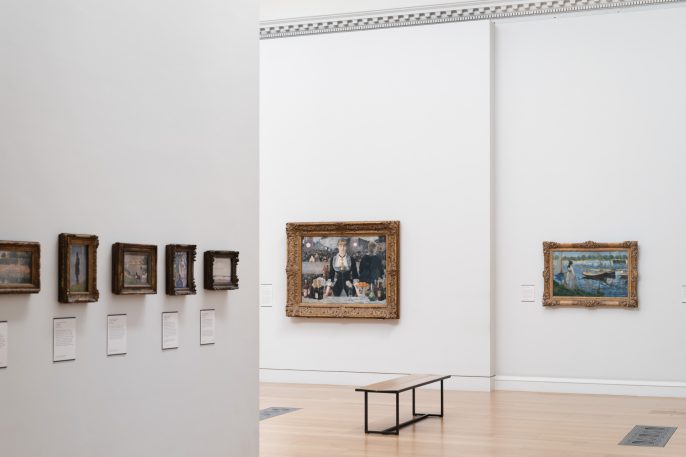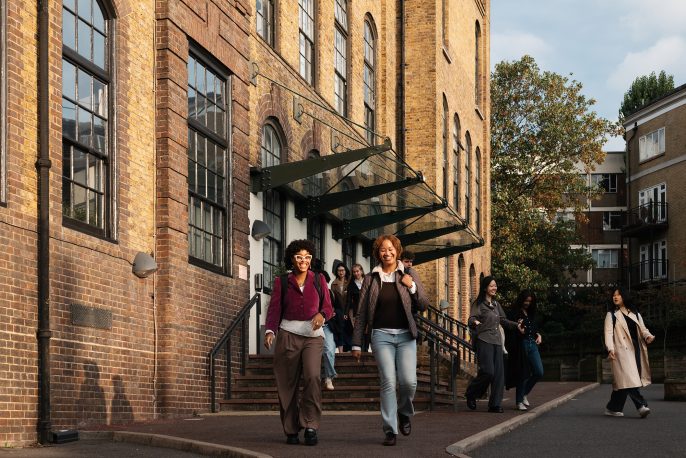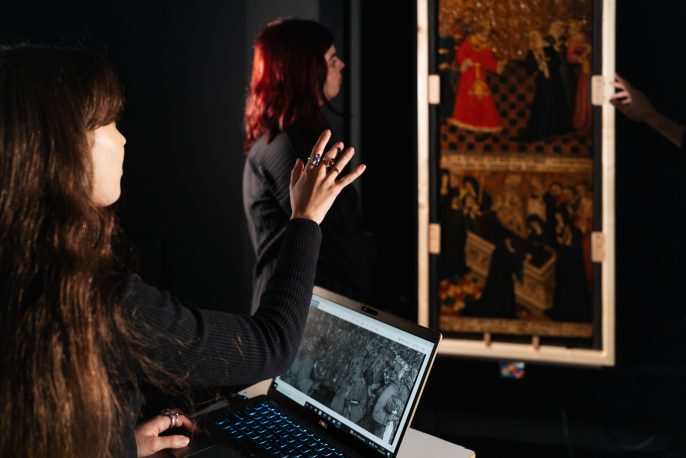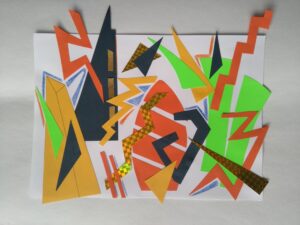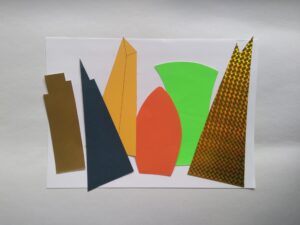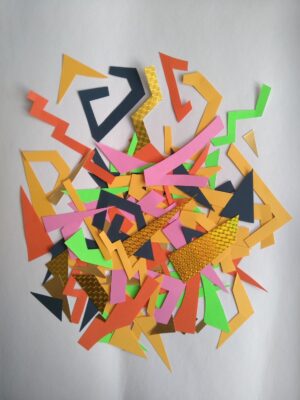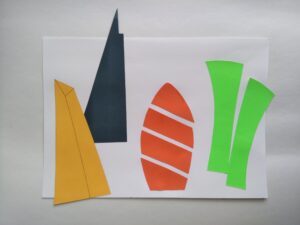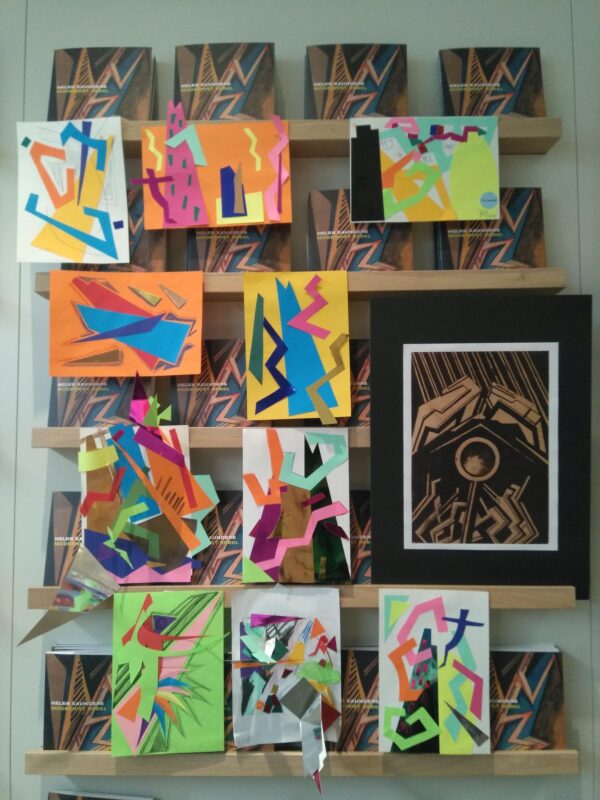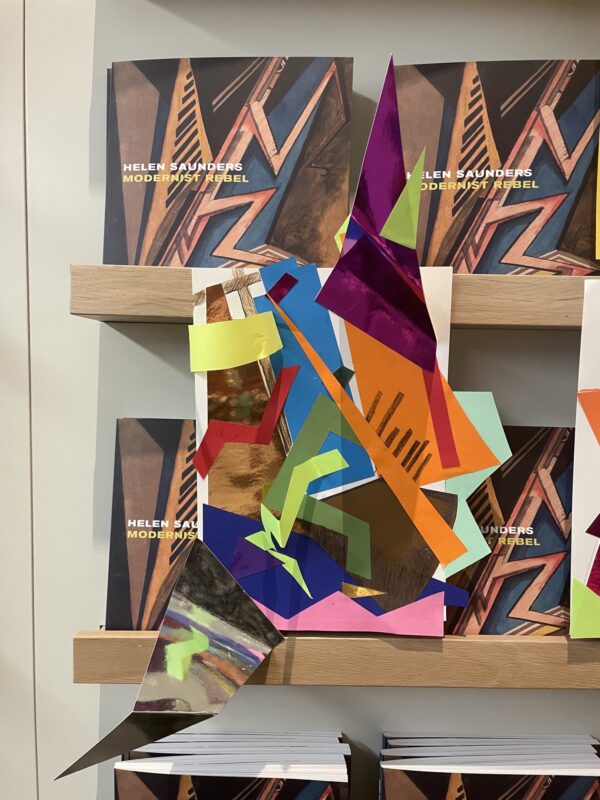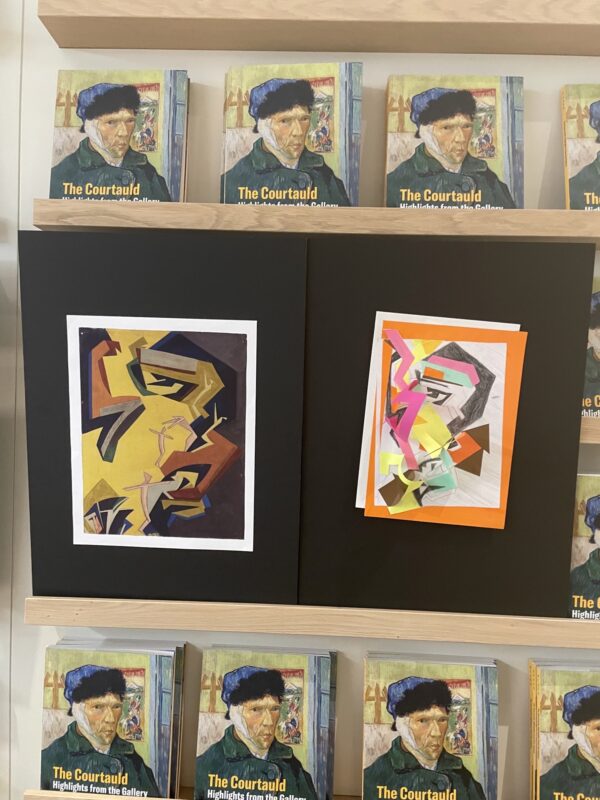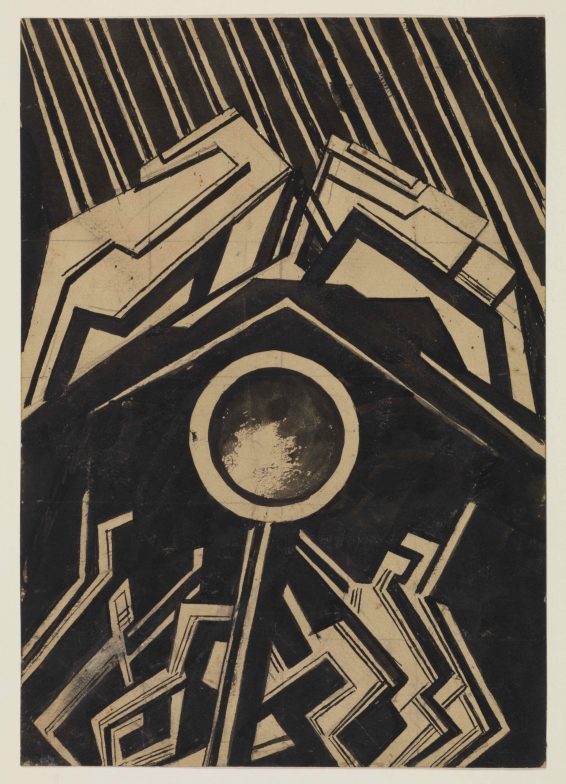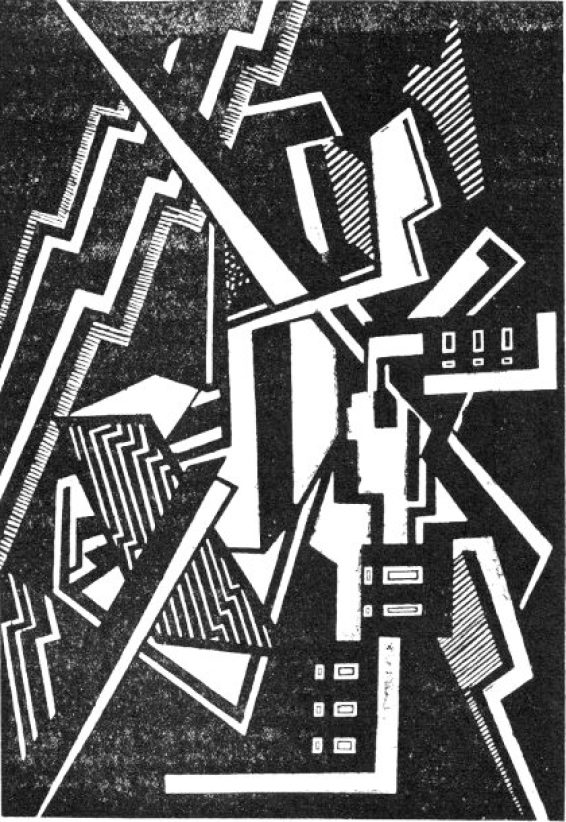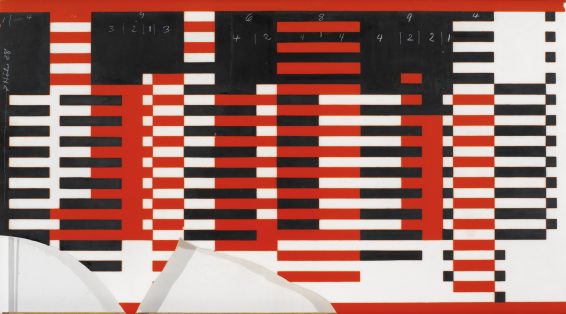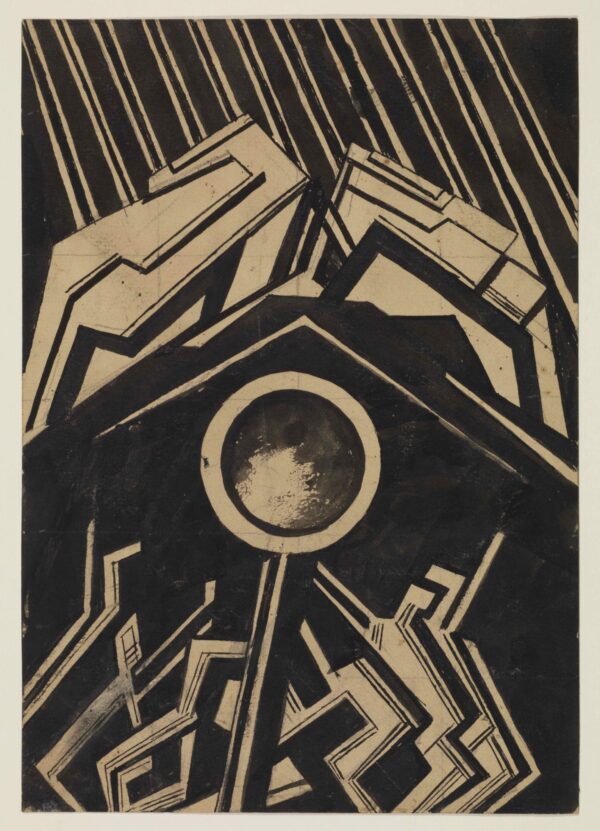
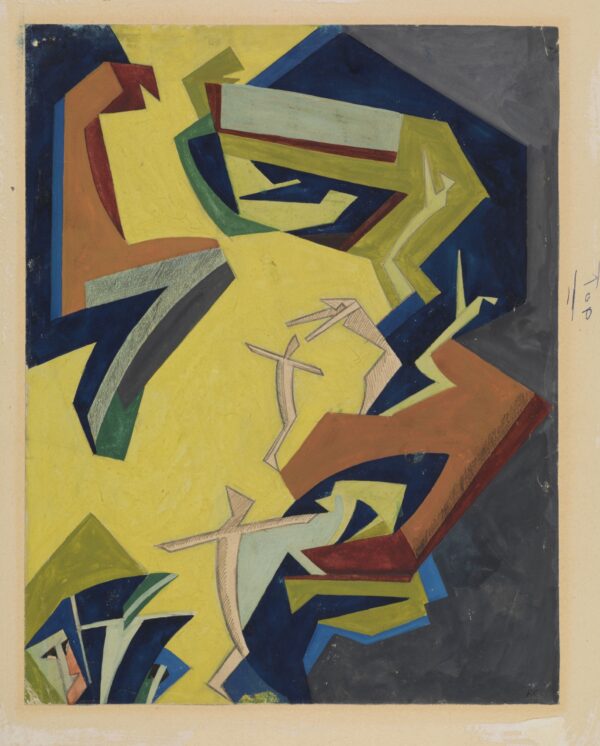
Devised by Courtauld Educators Fran Herrick and Nadine Mahoney.
Introduction
In the years just before and following World War I (1914–18) countries all around the world developed their own modern art movements. A new generation of artists responded to radical changes in how people lived and the role of technology, which the war showed could be both helpful and destructive. They were keen to break with the past and create vibrant visions of the future. Art from this time is often described as abstract: – artists were not concerned about making their artworks look realistic, but rather using shapes, colours and forms that captured the excitement of modern life.
Helen Saunders was at the heart of Vorticism, one of Britain’s most daring, if short-lived, modern art groups. Formed in London in 1914 and led by artist and writer Wyndham Lewis, the group wanted to capture the action and chaos of the modern city. A vortex is like a whirlwind or tornado! The group published their own magazine called ‘Blast’, which suggests an explosion and blowing away the competition. Saunders’s abstract images of the city were key to getting the group’s message across.
Capturing the energy of the city
Saunders’s Vorticist paintings are not supposed to show a particular place or idea, but cleverly bring to mind associations with architecture, stories and human experiences. She used bold colour combinations that had rarely been seen in art before and created a sense of energy with overlapping and interlocking shapes. She sometimes cut out extra shapes and glued them to her works on paper, such as the circle at the centre of Vorticist composition with figures, black and white.
Look closely at the artworks above
- In each case, which part is your eye drawn to?
- Can you see any forms that look like people? What might they be doing in each case?
- What do the other shapes make you think of?
- Which work feels more dramatic / surprising – the black and white or the colourful artwork?
Activity Variations
Take your collage into 3D. Combine card and recycled materials to add even more texture.
Use a sketch of a Helen Saunders artwork as the basis for your collage.
